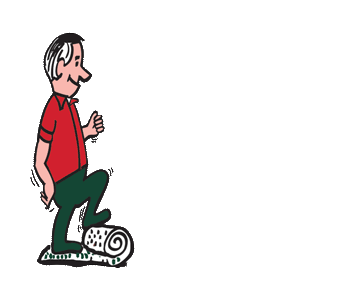The amount of new sod needed for a project can be determined by dividing the space into squares and rectangles. Calculate the area of each square or rectangular section (length x width), then add the areas together to get the total amount of sod that is required.
Each pallet will cover approximately 450 square feet, which is equal to 50 square yards. Each individual piece is about 16" x 24". There are 171 pieces on each pallet.
One of the best things about solid sodding is that it can be done year round. You don't have to wait for just the right ground temperature or for threat of frost or freeze to pass. You also don't have to rush your job to get the yard done before winter. Sod can be installed even in its dormant state to help with erosion control and in keeping your carpets and floors clean.
To prepare the soil for sod do the following:
- Remove any weeds. Identify and control. Kill any existing grass and remove.
- Remove debris, large rocks, construction material, etc.
- Apply 1½ to 2 inches of compost (landscape mix) across the area to be sodded.
- Establish a rough grade 1 to 1½ inches below sidewalks.
- Install sprinklers. An automated system is recommended to save time and water. Make sure sprinklers have good head coverage.
- Water to settle compost and to build water reserves in the soil.
- Rake for a finished grade.
Installing Sod
- Begin by installing turf along the longest straight line, such as a driveway or sidewalk.
- Butt and push the edges and ends against each other tightly, without stretching. Avoid
gaps or overlaps.
- Stagger the joints in each row in a brick-like pattern, using a large, sharp knife to trim
corners, etc.
- Avoid leaving small strips at outer edges, as they will not retain moisture.
- To avoid indentations or air pockets, avoid walking or kneeling on the turf as it is being installed or just after watering.
How much water does sod need?
- Immediately after installation, soak the grass thoroughly until water is standing in puddles and running down the street. Sod pieces should look like a dripping sponge that can't hold any more water. (Your neighbor should think you have a broken water line.)
- After this initial irrigation, water the grass once a day for the next two weeks.
- After the grass has established and rooted, give your lawn one deep irrigation each week. This may need to be increased during the extreme heat and drought times or may decrease during rainy periods.
When should I start mowing my new lawn?
Wait until the grass is fully established and rooted before the first mowing. This usually takes about 2-3 weeks.
Back To AnyCalculator.com FineTunedUniverse.com ExactWeather.com StreamZones.com (List of Roku Channels).
americasfrontlinedoctorsummit.com
medicineuncensored.com


